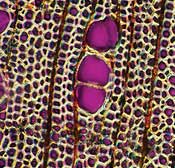Stem cell research still must overcome stiff challenges
Eng Hin Lee, MD, discussed the hurdles and possibilities of stem cell research at the BOA meeting.
 In his Presidential Guest Lecture at the British Orthopaedic Association Meeting in Manchester, Hin Lee, MD, of Singapore, discussed the potential of stem cells in orthopaedic research as well as the problems that face this area of science.
In his Presidential Guest Lecture at the British Orthopaedic Association Meeting in Manchester, Hin Lee, MD, of Singapore, discussed the potential of stem cells in orthopaedic research as well as the problems that face this area of science.
"We would [all] like to add more years to our lives, but also more life to our years," said Lee, professor of orthopaedic surgery and director of the division of graduate medical studies at National University of Singapore. "And this is something that we can talk about in terms of the potential of stem cells. We have been very good in the past 50 years or so doing things in terms of mechanical and biomechanical substitutes for bodies that are degenerating, but there is a trend now toward more biological methods of substituting for diseased parts, which brings me to the promise of stem cell research."
Obtaining stem cells
Lee discussed the types of stem cells and issues associated with each type. Embryonic, pluripotent stem cells, while the most powerful in terms of potential to differentiate into different tissue types, are also the most controversial. "This stems from the fact that we are worried [about] what happens to the embryo or fetus; when does the embryo become human?" Lee said. "That is a question that very few people can answer. Even more difficult to answer is when does the soul enter the embryo? These are big dilemmas that we face if we deal with embryonic stem cells, and of course religious views vary."
![]() One method of obtaining embryonic stem cells is from a fertilized embryo that is allowed to develop for five to six days, to the blastocyst stage. This is acceptable to some, Lee said, because the embryonic cells do not start to differentiate into types of tissues until 14 to 16 days.
One method of obtaining embryonic stem cells is from a fertilized embryo that is allowed to develop for five to six days, to the blastocyst stage. This is acceptable to some, Lee said, because the embryonic cells do not start to differentiate into types of tissues until 14 to 16 days.
Another, less controversial type of stem cell are adult stem cells, which can be derived from bone marrow or other adipose tissues. These cells are more directed, Lee said. They are multipotent rather than pluripotent.
Lee also discussed the various forms of stem cell legislation underway around the world, from the prohibitive to the more liberal. Austria, for example, allows use of embryos only for in vitro fertilization, effectively banning stem cell research. The United States and Germany both allow stem cell lines derived before a certain point in the embryo's development.
"Then there is the more liberal and pragmatic approach that allows embryos to be created for research purposes but under very strict legislation," Lee said. "Countries like the United Kingdom, Israel and Singapore … and many others are now and looking into legislation for stem cell research."
|
|
There are several methods that eliminate the ethical and legislative problems facing stem cell research, Lee said. A technique called nuclear reprogramming can derive stem cell lines from unfertilized eggs by transferring the nucleus from the somatic cell. "Another way would be parthenogenesis, where you can trick an unfertilized embryo into dividing," he said. This method produces two sets of the same chromosomes, which may not be viable.
The potential uses of stem cells in orthopaedics are many, Lee said. Studies indicate the potential to regenerate tissue in spinal cord injuries, as well as increasing mineral content in patients with osteoarthritis. Using stem cells at the insertion site for ACL reconstruction as well as for meniscal repair also could help the healing process. Lee said that there is still significant work to be done before these and other possibilities become realistic treatment options.
Johnny Huard, PhD, of the department of orthopaedic surgery at the University of Pittsburgh, does research using postnatal muscle-derived stem cells. "I think the application of stem cells for muscular dystrophy, for example, is far away because you have to inject the stem cells in all of those muscles," he told Orthopaedics Today. "But if you want to inject the stem cells to improve healing at a localized area, then that can be easier to apply."
Huard believes that while embryonic stem cells may be effective, the less controversial muscle- and bone-derived cells can also work well. "If we heal a bone fracture by three weeks, and maybe you can heal it by two-and-a-half weeks with embryonic stem cells, maybe they are better," he said. "But the ethical problems that you're going to have by using embryonic stem cells are not worth it." He also pointed out that there are some advantages to postnatal derived stem cells, including the ability to do an autologous transplantation with cells derived from a patient's own muscle or bone.
For more information:
- Lee EH. The potential of stem cells in orthopaedic research. Presented at the British Orthopaedic Association Annual Congress. Sept. 15-17, 2004. Manchester, England.

